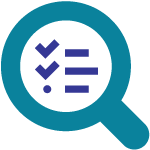
Four Core Co-Teaching Competencies
Co-Teaching is generally defined as two or more licensed educators, often a special education teacher and a general education teacher, sharing equal responsibility for planning, delivering, evaluating instruction, and learning to meet the diverse needs of students in a shared space. The overarching goal of co-teaching is to combine and expand upon the expertise of each professional for the benefit of all students. The co-teaching partners learn from one another, and over time, roles become more fluid such that planning, creating modifications, developing accommodations, and content instruction are all done by each as determined through co-planning and assessment of student needs. Attention to implementation science with regard to the application of evidence-based practices for the co-teaching model as well as instruction and behavioral supports is a critical factor to the success of co-teaching. The presence of a special education teacher in a general education classroom does not automatically mean the class is co-taught. Practice Profiles identify the core components of a program, innovation, practice, or intervention, and describe the key activities that are associated with each core component. Practice profiles enable a program to be teachable, learnable, and doable in typical human service settings. (Description of Practice Profiles) This allows us to have a common language when discussing co-teaching, especially when designing a co-teaching environment that supports equity. The Co-Teaching Practice Profile describes the essential attributes of an equitable co-taught learning environment which is inclusive of each and every learner. Outlining four core competencies, this practice profile document aims to provide both educators and leaders a framework to promote and support inclusive and equitable co-taught classrooms. The Co-Teaching Practice Profile serves as a starting point for educators to examine their practice and to implement change at a classroom and school level. Educators at every level may find practical use of this tool in multiple ways, including: Wisconsin Department of Public Instruction has developed resources to support schools in the selection and implementation of co-teaching as an instructional approach to provide meaningful inclusion that facilitates grade-level standards-based education. If your district or school is considering, or reflecting on, whether co-teaching is a good fit for your district, please consider using THE HEXAGON TOOL, developed by the National Implementation Research Network (NIRN). The Hexagon Tool can be used by communities and organizations to better understand how a new or existing program or practice fits into an implementing site’s existing work and context. The Hexagon Tool can be used at any stage of implementation to assess fit and feasibility. It is most commonly used during the Exploration stage when an implementing site is identifying and selecting new programs and practices to implement (NIRN). The Co-Teaching Practice Profile was developed to align with the Inclusive Learning Community Practice Profile (ILC-PP). To find out more about developing Inclusive Learning Communities in your school or district go the DPI webpage for the discretionary project - Research to Practice: Inclusive Learning Communities.
Hexagon Tool
